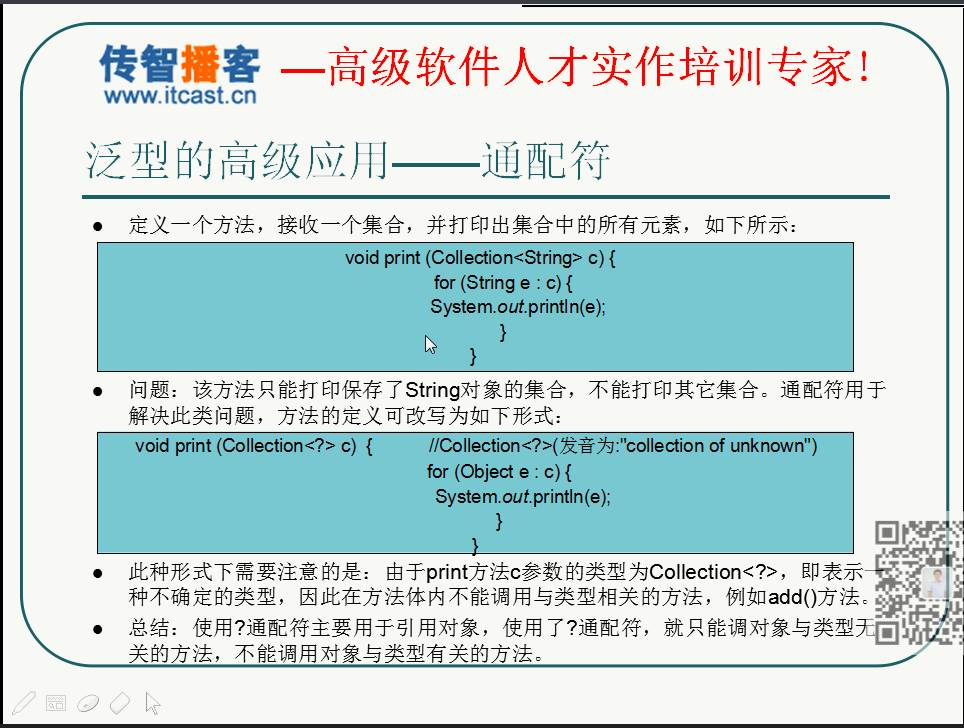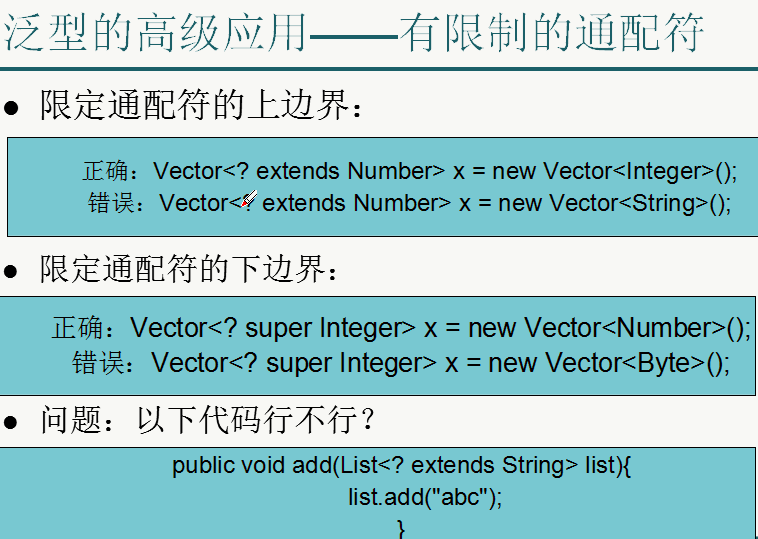1、基本概念
class ArrayList<E>
<>: typeof,元素是什么类型的
E:泛型的形式参数类型
<Integer>:泛型的实际参数类型
ArrayList<E>:带有泛型的类型
ArrayList<Integer>:参数化的泛型类型(ParameterizedType)
2、
ArrayList<String> list = new ArrayList<Object>(); X
ArrayList<Object> list = new ArrayList<String>(); X
ArrayList<String> list = new ArrayList (); 正确
ArrayList list = new ArrayList<String>(); 正确
使用:两边都带有泛型的,泛型的类型必须完全一致。可以只有一边有。
3.



1 //泛型方法的定义 2 public class GenericDemo1 { 3 //<T>:声明泛型。必须放在方法的返回值的前面 4 //泛型只有声明后才能使用 5 public <T> T m1(){ 6 return null; 7 } 8 public <T> void m2(T t){ 9 10 } 11 public static <T> T m3(){ 12 return null; 13 } 14 }

1 //泛型类的定义:GenericDemo2<T> 2 //类上定义的泛型,实例方法上就可以直接使用了 3 //静态方法都必须先定义后使用 4 public class GenericDemo2<T> { 5 6 public T m1(){ 7 return null; 8 } 9 public void m2(T t){ 10 11 } 12 public static <T> T m3(){ 13 return null; 14 } 15 }

1 //定义多个泛型类型 2 public class GenericDemo3 { 3 4 public static <K,V> V m3(K k){//Map 5 return null; 6 } 7 }

1 public class ArrayUtil { 2 //实现任意数组指定位置上元素的交换(1 2 3 4 0 3-->4 2 3 1) 3 public static <T> void change(T[] t,int index1,int index2){ 4 T tmp = t[index1]; 5 t[index1] = t[index2]; 6 t[index2] = tmp; 7 } 8 //翻转数组中的元素(1 2 3 4 ---》4 3 2 1) 9 public static <T> void reverse(T[] t){ 10 11 int startIndex = 0; 12 int endIndex = t.length-1; 13 14 while(startIndex<endIndex){ 15 T tmp = t[startIndex]; 16 t[startIndex] = t[endIndex]; 17 t[endIndex] = tmp; 18 startIndex++; 19 endIndex--; 20 } 21 } 22 }

1 import static org.junit.Assert.*; 2 3 import java.util.Arrays; 4 5 import org.junit.Test; 6 7 import com.itheima.util.ArrayUtil; 8 9 public class ArrayUtilTest { 10 11 @Test 12 public void testChange() { 13 Integer i[] = {1,2,3,4,5,6}; 14 ArrayUtil.change(i, 1, 4); 15 System.out.println(Arrays.asList(i)); 16 } 17 @Test 18 public void testReverse(){ 19 Integer i[] = {1,2,3,4,5}; 20 ArrayUtil.reverse(i); 21 System.out.println(Arrays.asList(i)); 22 } 23 }
